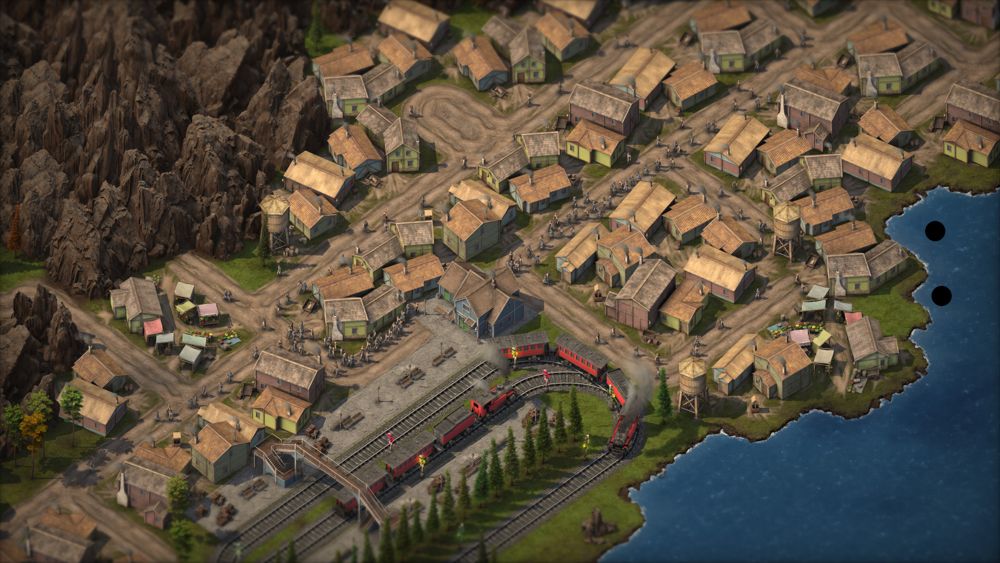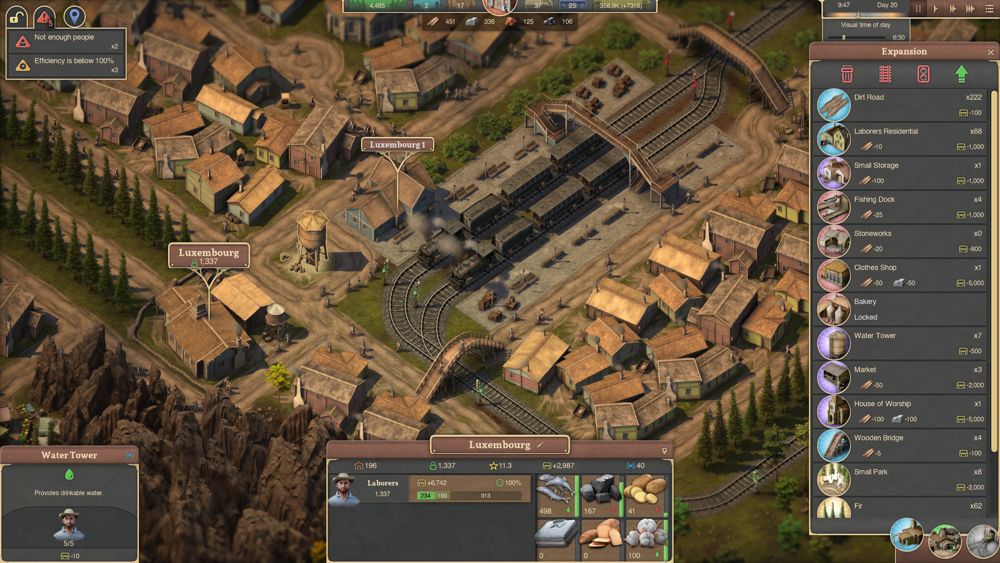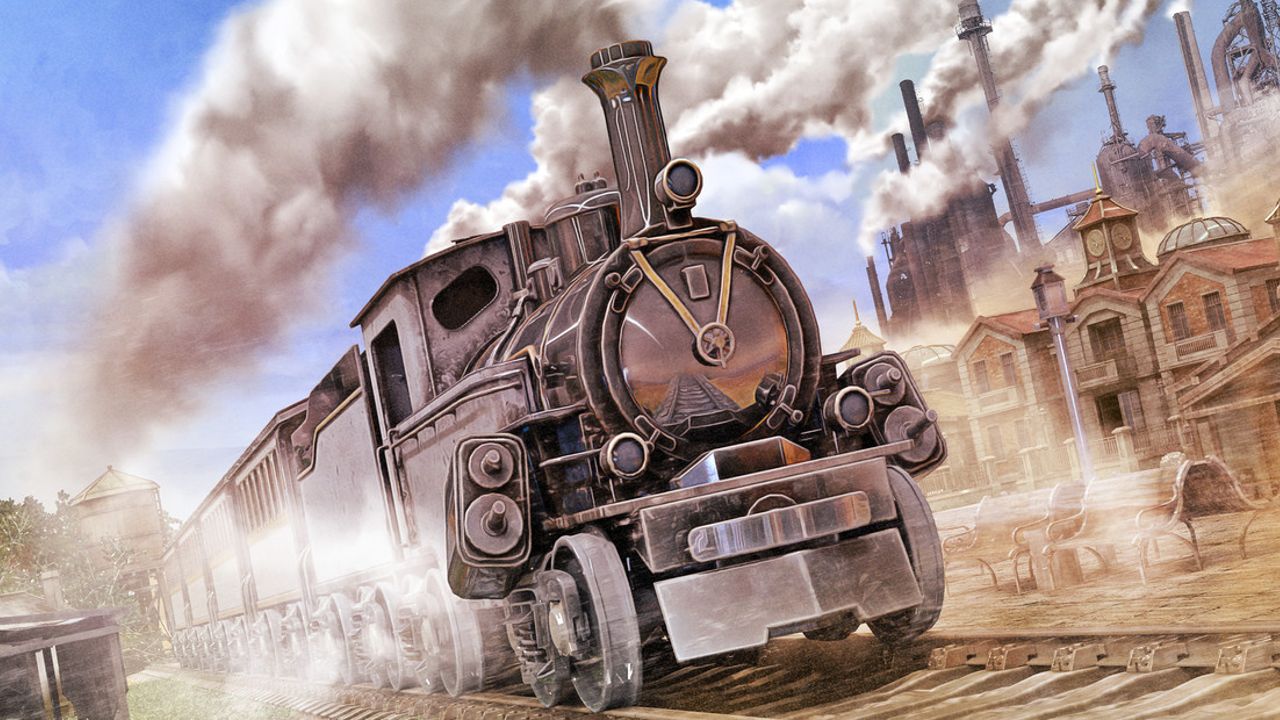Sweet Transit, which we will look at in this review, is a management developed by Team17 which starts from a dynamic never exploited in the same way before. In the game we have to do grow and prosper a city; only that themain element of gameplay is the railway system and the city develops around it.
The Sweet Transit review
If we’re being honest, Sweet Transit wasn’t an easy review. On the one hand, the game is still in early access (even if it doesn’t seem like it at first glance) so we can’t be sure how many and which changes the final product will undergo. On the other hand, the product is technically very refined but playing it, you feel that a number of design elements are still missing; last but not least, a final balancing of the parameters.
In its current state, Sweet transit we loved itbut it is very difficult to estimate how faithful our experience will be to the final result.
It’s hard to call it early access
From the point of view purely technical it’s hard, very hard, to call Sweet Transit a game that’s still in development. During our testing hours the game never crashed and we did not notice any abnormal behavior. Of course, there may have been a luck component as well; because from what you read on the net there are software problems, but the situation seems more than sustainable.
We realize that the game is not yet complete because by advancing the city at a certain point we find ourselves with empty menu boxes or a resource/structure not yet implemented. Since not all the tools are already at our disposal, the game becomes repetitive a little sooner than expected; at least for now.

A game made essentially of mechanics
Usually, a game also tells us a story. It is not always mandatory, but a narrative arc that is also very simple to tell us that we have a goal is found in the vast majority of games. Sweet Transit is one of the exceptions to this rule.
In Sweet Transit all we have is a setting and game mechanics. The setting, judging by the aesthetics of the trains and buildings, seems to be that of the 1800s American frontier with some poetic license, such as traffic lights and diesel engines. But we stop there; in the sense that it could also have been the English countryside of Victorian England and it wouldn’t have changed much. Our impression is that the historical context serves more than anything else to justify that to manage the trains, at least initially, it is necessary to mine coal.
All the rest we are given are the game mechanics. When we start Sweet Transit we can follow a tutorial that explains how to lay the railways, how to make the trains go back and forth and how to place the various buildings on the territory. This tutorial is, in our opinion, a bit long but well organized even if we struggled a bit at some points. However, we attribute this effort to the interface and not to the tutorial itself.
We couldn’t figure out if the story is missing because a campaign mode will be added later or because the game simply doesn’t have one. Let it be understood that the second case is not necessarily a problem; there are other similar and very successful games that make the same choice. Just think of the SimCity series. Let’s just say that if you really need to feel transported through a story to immerse yourself in the game, Sweet Transit does not have this feature, at least for now.
A city that grows around the rails
As already mentioned above, Team17 designed Sweet Transit based on a concept that we have never seen applied in that way. The transportation system is no longer a service which we add to the city, but it becomes the main element and the rest can only be developed around it.
Playing SimCity, we often made expanses of buildings and, when we realized that someone was uninhabited, we sacrificed buildings to lay a road or a railway. Sweet transit it can’t work the same way.
In Sweet Transit, first of all, the train is the only means of transport available, and with that you have to do everything. According to laying the rails is the main strategic element of the game; because the availability of goods and the fact that workers can reach the factories depend on their planning. Only once we have a functioning railway system, then can we build buildings around it and grow our city.
That said, the system obviously is designed to push us to occupy all available space. A very large city needs a lot of resources to function. To have more resources you need, of course, more production plants. In order to increase facilities and bring workers I have to extend my railway system, and this will cost me additional resources.
We prefer not to tell you anything about the best strategies for laying the rails. It would just be a spoiler, since one of the pleasures of the game is precisely to understand how to best optimize the railway system.

The current state of development
We have already said that it is difficult to define Sweet Transit as an early access game. And we confirm it. It is also true, however, that by playing with it a minimum of burrs on the edges pop out. However, none of these can be classified as a serious problem: they are all things that will be fixed with various software updates or as the development process progresses.
I controls are absolutely up to the task but, in our opinion, the interface could use an overhaul because there were a couple of points during the tutorial where we spent time wondering “where do we click now?”. The menu system is easy to use but there is some scope to make it more intuitive in our opinion.
The laying of the tracks works very well while that of buildings still has room to become a little smoother. If, like some of us, you’re a neat freak, there are some compositions you might have to tinker with.
As you progress through the game you will sometimes find yourself with some missing interface elements. Something will have to be added in the future and, for now, there is a placeholder. It’s not visually beautiful, but we don’t even feel like calling it a problem. After all, we are talking about an early access game.
On the graphical interface, after some discussion, we think it is better not get carried away. The current state it is done very well, in high definition and has elements that reminded us of The Sims at times. However, we have seen such an evolution that it could still undergo many changes (all for the better); therefore, there is little point in finding fault with her right now.
The important thing, in our opinion, is that the central part of the game, that is the gameplay, it seemed definitive, stable and very well thought out. And, after all, the gaming experience is given by that.
The first update is already available
A October 2022 an update came out work in progress for Sweet Transit. Although the game is still in development the news are such as to justify a dedicated announcement. The main changes are two: the introduction of steel as a resource and better control of game difficulty. The steel obviously arrives accompanied by a series of structures for its processing and in turn makes others available; such as steel railway bridges.
These two innovations are accompanied by some improvements on the interface, some other minor changes and the inevitable bug fixes.
The Sweet Transit review at a glance
Sweet transit, which we saw in this review, it is certainly a very promising game: leverages one mechanics used in an innovative way and Team17 is producing a game with the quality that has always distinguished them. In all honesty, it is difficult to understand immediately that this is an early access game. We only notice it as we progress, when the explorable content ends a little earlier than expected and the game loses its liveliness.
It’s definitely a game that we recommend everyone to tryespecially to the management enthusiasts. The cost is not particularly expensive but perhaps, given the current state, someone will prefer to wait for some small discount on Steam.













Leave a Reply
View Comments